Rocky Mountain MIRECC TBI Toolkit
TBI 101 Pages: Adult | Resources for Youth
Background | For Parents | For Educators | For Healthcare Professionals
Resources for Clinicians
Screening and Assessment
TBI Screening: Screening for TBI is the first step in gathering information regarding a possible injury. In general, screening procedures are used to evaluate whether or not a more comprehensive assessment is indicated. In many cases, a positive TBI screen should be followed by a comprehensive assessment. This is particularly true for those who have sustained a recent injury.

Documents to Download
- Medical Documentation of TBI
- Credible History
- Comprehensive Health Assessment
- Brain Check Survey
- Neurocognitive Evaluation Form
- Principles of RTI
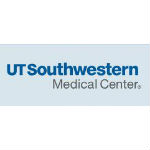 Banyan Brain Trauma Indicator
Banyan Brain Trauma Indicator- Assessment for TBI: Full assessment procedures should be implemented for those with screening results suggesting a possible history of TBI. It should be noted that traditional brain imaging is generally not useful in detecting mild TBI (mTBI). Moreover, recent advances include FDA approval for a blood test to help determine whether or not a CT scan is indicated post-concussion. For more information regarding the Banyan Brain Trauma Indicator see: Banyan Brain Trauma Indicator
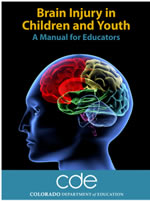 Brain Injury in Children and Youth: A Manual for Educators (2013) (PDF)
Brain Injury in Children and Youth: A Manual for Educators (2013) (PDF)- "Definition: A child with a Traumatic Brain Injury (TBI) is a child with an acquired injury to the brain caused by an external physical force resulting in total or partial functional disability or psychosocial impairment, or both, which impairment adversely affects the child’s ability to receive reasonable educational benefit from general education. A qualifying Traumatic Brain Injury is an open or closed head injury resulting in impairments in one or more areas, such as cognition; language; memory; attention; reasoning; abstract thinking; judgment; problem-solving; sensory, perceptual, and motor abilities; psychosocial behavior; physical functions; information processing; and speech. The term “traumatic brain injury” under this rule does not apply to brain injuries that are congenital or degenerative, or to brain injuries induced by birth trauma."
Download the complete manual. 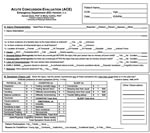 Acute Concussion Evaluation - Emergency Department version
Acute Concussion Evaluation - Emergency Department version- The ACE (Acute Concussion Evaluation) forms are patient assessment tools.
Download the Acute Concussion Evaluation - Emergency Department version 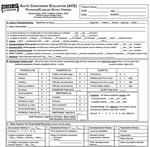 Acute Concussion Evaluation - PhysiciAn/clinician office version
Acute Concussion Evaluation - PhysiciAn/clinician office version- The ACE (Acute Concussion Evaluation) forms are patient assessment tools.
Download the Acute Concussion Evaluation - PhysiciAn/clinician office version 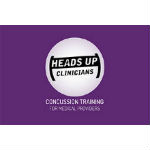 HEADS Up to Health Care Providers
HEADS Up to Health Care Providers- Timely recognition and appropriate response is important in treating a mild traumatic brain injury (MTBI) or concussion. Health care providers can play a key role in helping to prevent a concussion and to improve a patient's health outcomes through early diagnosis, management, and appropriate referral. CDC has created practical, easy-to-use clinical information and tools for health care providers and their patients, including free online training that offers free continuing education credits. Go to Heads Up for Clinicians website
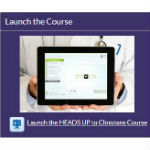 Online Concussion Training for Health Care Providers
Online Concussion Training for Health Care Providers- "HEADS UP to Clinicians: Addressing Concussion in Sports among Kids and Teens" is a free, online course, developed by CDC through support from the CDC Foundation and the National Football League, available to health care providers. It features interviews with leading experts, dynamic graphics, and case studies and provides an overview of what you, as a health care professional, need to know about concussion among young athletes. Go to the course
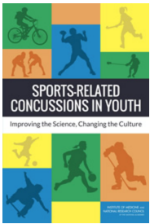 Sports-Related Concussions in Youth: Improving the Science, Changing the Culture
Sports-Related Concussions in Youth: Improving the Science, Changing the Culture- This link takes you to Appendix C: Clinical Evaluation Tools. In this section you will find:
CONCUSION ASSESMENT TOOLS,
BALANCE TESTS,
SYMPTOM SCALES, and
COMPUTERIZED NEUROCOGNITIVE TESTS.
The complete book can be found online here. 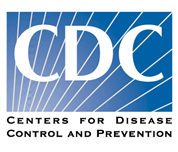 CDC: Managing Return to Activities
CDC: Managing Return to Activities- Appropriate diagnosis, referral, and patient and family/caregiver education are critical for helping patients with mild TBI (MTBI) achieve optimal recovery and to reduce or avoid significant adverse health outcomes. However, diagnosing MTBIs can be challenging as symptoms of MTBI are common to those of other medical conditions and the onset and/or recognition of symptoms may occur days or weeks after the initial injury. Therefore, CDC has collaborated with multiple organizations and leading experts to develop clinical guidelines and tools for diagnosis and management of patients with MTBI. Includes sections on returning to school, work, sports, and when to refer to a specialist. Visit the CDC: Managing Return to Activities website.
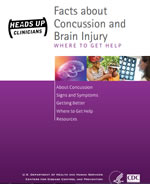 Facts about Concussion and Brain Injury
Facts about Concussion and Brain Injury - A concussion is a mild form of traumatic brain injury (TBI) caused by a bump, blow, or jolt to the head. Concussions can also occur from a fall or a blow to the body that causes the head to move rapidly back and forth. Doctors may describe these injuries as “mild” because concussions are usually not life-threatening. Even so, their effects can be serious. Understanding the signs and symptoms of a concussion can help you get better more quickly.
Download the Facts about Concussion and Brain Injury 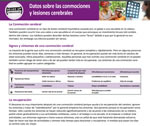 Datos sobre las conmociones y lesiones cerebrales
Datos sobre las conmociones y lesiones cerebrales- Una conmoción cerebral es un tipo de lesión cerebral traumática causada por un golpe o una sacudida en la cabeza. También pueden ocurrir tras una caída o una sacudida en el cuerpo que provoque un movimiento brusco del cerebro dentro del cráneo. Los médicos pueden describir dichas lesiones como “leves” debido a que por lo general no son mortales. Sin embargo sus efectos pueden ser serios.
Download the Datos sobre las conmociones y lesiones cerebrales 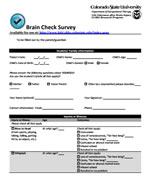 Brain Check Survey (BCS)
Brain Check Survey (BCS)- Life Outcomes after Brain Injury (LOBI) is a research center located within the Department of Occupational Therapy at Colorado State University in Fort Collins, CO. The research conducted through LOBI focuses on screening students for possible traumatic brain injury (TBI), life outcomes, and care access following brain injury (See Publications for previous research from this center). Currently, we have a funded research study, through the Colorado Brain Injury Trust Fund Research Program (CO-TBITF), which supports our mission and commitment to explore and expand opportunities for relevant services for individuals who have sustained a brain injury. Services begin with recognition of the event of brain injury. To this end, we have spent the last 12 years developing and testing the Brain Check Survey (BCS) – a parent-completed screening tool used to establish a credible history of brain injury, which, in turn, triggers a thorough evaluation of difficulties encountered by students in the classroom. The long-term goal of the use of the Brain Check Survey is to facilitate the process of establishing eligibility for related services under the traumatic brain injury (TBI) eligibility category in K-12 schools across Colorado.
Download the Brain Check Survey (BCS) 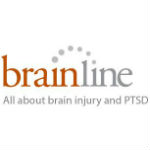 BrainLine: Children with Moderate to Severe TBI
BrainLine: Children with Moderate to Severe TBI- Children with moderate to severe TBI should be referred to providers with specialized TBI experience for both acute care and long-term follow. Of particular interest may be the following videos:
How Can Physicians Best Help Families with Children with Brain Injury
How to Treat Children with TBI
Typical Recovery Sequence Following a Child’s TBI
Also available, are a number of resources regarding Pediatric Rehabilitation including:
Pediatric versus Adult Rehabilitation After Brain Injury 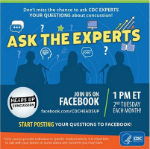 Ask the CDC Experts about Concussions
Ask the CDC Experts about Concussions- Connect with the CDC and peers to discuss what is going on in the field re: concussion.
Like HEADS UP on Facebook
Follow CDC Injury on Twitter
Checkout the HEADS UP Film Festival on YouTube
Join to get Email Updates
Follow CDC on Instagram  Stay Connected: Join the Colorado Kids Brain Injury Resource Network Listserv
Stay Connected: Join the Colorado Kids Brain Injury Resource Network Listserv- To Subscribe send an email to: TBI-join@web.cde.state.co.us
You will receive a confirmation email. You will not be added until you respond to this email. If you have a problem, try using “plain” text or check with the technology people in your district.
Site Map
Contact Information
Denver
Rocky Mountain Regional VAMC (RMR VAMC)
1700 N Wheeling St, G-3-116M
Aurora, CO 80045
720-723-6493
Salt Lake City
VA Salt Lake City Health Care System
500 Foothill DR
Salt Lake City, UT 84148
801-582-1565 x2821




















